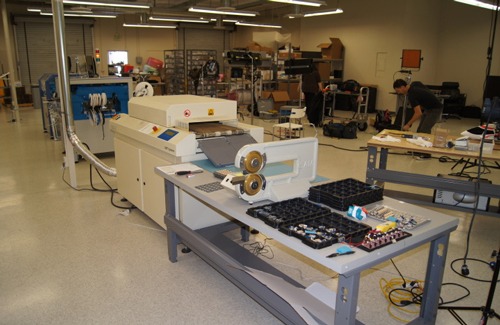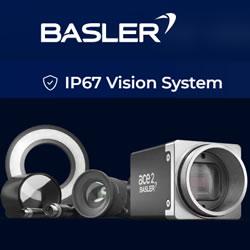You can pretty much give UAVs any use you want, provided that you have enough imagination and patience to see that function come alive. Some of the most common uses right now and in the future will probably be related to photography, mapping, surveillance, surveying and any other activities that might involve risking human lives.
Lorenzo Lopez | 3D Robotics
Please tell us a bit about 3D Robotics - who are you and what are you up to?
3D Robotics is a company started by Jordi Munoz and Chris Anderson, with the main focus of creating an autopilot system that would be accessible to the general public but at the same time have the functionality and features of other existing and more expensive systems. Another very important point that the company has a one of its main features is being open source; a lot of the input we receive for products comes from the DIY Drones online community.

3D Robotics new 10,000 square foot factory in San Diego
Can you give some examples of applications or industries where you can see commercial UAVs having a real impact in the next couple of years?
It’s very hard to say as you can pretty much give UAVs any use you want, provided that you have enough imagination and patience to see that function come alive. Some of the most common uses right now and in the future will probably be related to photography, mapping, surveillance, surveying and any other activities that might involve risking human lives.
What is Arduino?
Arduino is an open source hardware and software development environment designed to make prototyping a very open and “simple” process. You can find more info here: arduino.cc
Tell us about the new ArduPilotMega 2.0.
The ArduPilot Mega 2.0 is a revamp of the previous ArduPilot Mega system as it incorporates many of the previous features but at the same time making it more efficient and user friendly. While the previous system came in the form of two basic boards, the onboard computer (ArduPilot Mega) and an IMU sensor board (ArduPilot Mega Shield or “Oil Pan”) with an array of external accessories such as GPS, electronic compass magnetometer, airspeed sensor, etc.

The new ArduPilotMega 2.0 Autopilot
This system integrates all the previous functions into one main board and a small shield fixed on top: the standalone system will have all the functions as APM 1 plus GPS, electronic compass and an enhanced pressure sensor not available on the previous board for a reduced cost.
Who is your primary customer at this time and how will that change in the years to come?
Our main customer base is made up of hobbyists and schools such as universities and colleges. As the product becomes more publicly known we hope to draw customers that were not too familiar with r/c vehicles or uav systems and make it an easy and fun transition for them.
UAVs have an infinite number of potentially positive commercial applications but I think right now a lot of people think of them as military vehicles. Furthermore as costs come down and availability grows, it's only a matter of time before some incident or UAV misuse takes place to further perpetuate the fear or misinformation many people have with the technology. What do you think we can do to counter balance this?
We can’t control who uses our products and for what reasons, but as long as we have a strong community that believe in the same goals that we have, this shouldn’t be an issue. We believe in having our information available for people to access and evaluate, they will be able to tell for themselves the positive uses that this technology currently has and will have in the future.
What is the latest information regarding the FAA regulations on commercial UAVs?
This is still an ongoing discussion, but the last bits on information we got talked about regulating the export and distribution of ready to use autopilot systems (or UAVs basically). That’s an issue that might affect us as we would like to create at some point a system that doesn’t require excessive hand soldering and assembly; a system that is almost plug and play.
Do you think object recognition and avoidance, like what we are seeing demonstrated with the Kinect and ROS, will be possible for homebrew UAVs in the next few years?
It is possible; we have a product that has a similar function, the Optical Flow Sensor. It uses an optical mouse chip to process an image. It is very basic in function and design but it gets the job done with no issues. I know there are other products out there that can do the same or an even better job, as the technology keeps getting updated.
Here’s a link to our product listing: https://store.diydrones.com/Optical_Flow_Sensor_p/br-0016-01.htm
Where do you see the robotics industry growing the fastest over the next 5 years?
With the technology and information being so readily available on many sources (one of them being the internet), I can only see this growing exponentially. Our company has achieved 100% growth every year since it started, what this tells us is that more and more people are getting into this hobby, be that for fun, education, research, etc. And like us there are other companies focusing on making electronics accessible to anyone and at the same time helping drive innovation and diversity.
You can purchase the ArduPilotMega autopilot hardware as well as everything else UAV related at the DIYDrones online store.
The content & opinions in this article are the author’s and do not necessarily represent the views of RoboticsTomorrow
Featured Product



